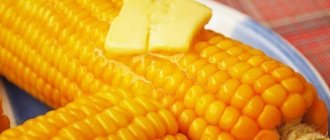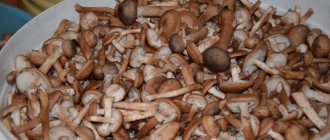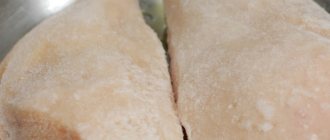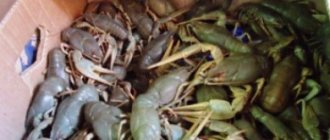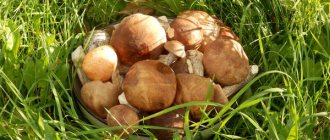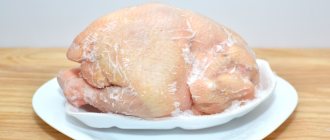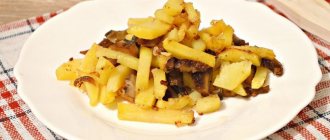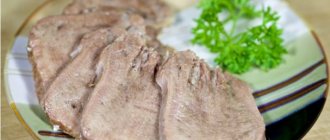Beneficial features
Corn is good for health because it contains fiber, fatty and essential oils, vitamins A, C, PP, E, almost the entire group B, a large amount of minerals - magnesium, calcium, manganese, iron, phosphorus, zinc and others.
REFERENCE! The cereal combines 26 elements of the periodic table, due to which it is used as an aid to strengthen the immune system and in the treatment of many diseases.
Corn helps cleanse the body by removing waste and toxins. Despite its high calorie content (from 88 to 325 kcal per 100 g), it lowers cholesterol levels, normalizes metabolism and helps fight excess weight. Eating corn is a good prevention of cardiovascular diseases.
The cereal has diuretic and choleretic properties, therefore it is effective in the complex treatment of hypertension and for relieving edema. Corn is good for the digestive tract: it regulates the functioning of the stomach and intestines.
In order to maximally enrich your body with the beneficial substances contained in corn, you need to know how to properly prepare the cereal and in what conditions to store the dish. And here many housewives are faced with a dilemma: to drain or not to drain the water after boiling corn. The answer to this question depends on how long and in what form you intend to save the finished product.
Shelf life
The table below shows possible periods for various methods of storing cereal:
| Storage method | Shelf life |
| At room temperature | 10-12 hours |
| In a refrigerator | 2-3 days |
| When frozen | 8-12 months |
| During conservation | 1-3 years |
| When drying | Up to 3 years |
Storage at home
Can corn be left in this water or should it be drained? Gourmets know that the most enjoyable thing to eat is freshly cooked corn. However, if the boiled vegetable is properly prepared for storage, you will be able to preserve both its taste and vitamin “bouquet”.
If you need to save the finished cobs for a short time, then the most reliable option is to leave the corn in boiling water, and wrap the container in which it was boiled in thick cloth or warm clothing. Also, boiled cereal can be packaged in bags and wrapped in a warm blanket. A proven way to keep corn hot and tender for several hours is to wrap the cobs in several layers of foil.
IMPORTANT TO REMEMBER that all the above methods at room temperature will be effective for a maximum of ten hours. After this period, it is not recommended to eat corn prepared in this way.
To preserve the finished product for several days, you need to use one of the following methods:
Leave the cobs in the pan with the broth, cool them, and put them in the refrigerator, where they will remain fresh, soft and tasty for at least three days.- You can also remove the finished fruits from the water, cool them, place them in a plastic container with an airtight lid, and put them in the refrigerator.
It will be convenient and rational to store boiled corn in the form of grains. By separating them from the cob and placing them in a cool place in a bag, you are guaranteed to keep the product fresh and juicy for at least two to three days.
By the way, boiled corn can be stored in the form of grains for up to three months. To do this you need:
- cool the finished cobs;
- separate the grains;
- pour them into a glass container;
- pour salted boiled water;
- Close tightly and store in a cool place;
- After a couple of weeks, it is recommended to add salt water (1 teaspoon of salt per 1 liter of water).
Regardless of when you remove the boiled corn from the broth, do not rush to throw it away. It is tasty, healthy, nutritious and can be used both for culinary purposes, for example, for stewing vegetables or making soup, and for cosmetic purposes - to strengthen nails and hair, and care for facial skin.
How to choose corn cobs
There are quite a few nuances in the preparation of this grain crop. If cooked incorrectly, corn cobs can be fibrous, tough, or, conversely, overcooked. In order for the boiled “queen of the fields” to turn out juicy, soft and sweet, it must not only be cooked correctly, but also be able to choose for cooking.
Choose cobs with leaves
Choose this vegetable with the following features in a store or market:
- Firstly, with leaves that protect the “amber grains” from mechanical damage or spoilage. Such leaves are a kind of “packaging” for grains.
- Secondly, with corn heads, which should be clean, fresh, young, healthy, without excess moisture.
- With fresh ears of green, or light green, but not yellowish tint.
- With juicy and sweet grains of milky-waxy or milky color with a soft yellow tone. Consequently, if you press on the grain shell, a juice similar to sweet milk will be released from it. Such young corn has grains tightly adjacent to each other and a delicate shell.
- Please note that the grains of the old cereal are bright yellow or orange.
- As a general rule, if the corn silk is moist and reddish in color, the cob is not ready to eat. And if its grains are completely white, then the head of cabbage is unripe.
All grains must be in place, without gaps
- The vegetable is firm to the touch, but not hard, with all the grains present. There should be no empty areas.
- Choose cobs that are free from rot, mold and stains.
- As you know, healthy corn kernels should easily come away from the head.
- In addition to this, do not buy “maize” that has hollowed kernels. This is a sure sign that the corn has lost moisture, juiciness, and is overripe. If you cook it for many hours at a time, it will still be tough.
- Finally, don't use corn for cooking - it takes a long time to cook and its taste may disappoint you.
Will freezing help?
A fairly common misconception is that corn is a seasonal delicacy. In fact, if stored frozen, vegetable grains can be enjoyed year-round. Moreover, this storage method is well suited for both boiled and fresh corn.
Boiled cobs can be stored in the freezer for 8 months to a year. To do this they need:
- cool;
- dry on a towel;
- pack in bags;
- removing excess air;
- to freeze.
If you do not have enough space in the freezer, then it is better to store corn beans in it:
- separate them from the boiled cobs;
- spread in a single layer on a flat surface;
- place in the freezer for an hour or two;
- then pour the frozen grains into bags, tie them tightly and place them in the freezer.
ADVICE! Fresh corn can also be frozen on the cob and kernels.
If you chose the first option, then you should take measures to prevent the corn from becoming “rubbery”:
Before freezing, it is advisable to blanch the cobs, having first cleared them of coarse leaves.- When only young foliage remains on the corn, it must be alternately dipped in boiling water and then in ice water. Small cobs are blanched for about 10 minutes, larger ones for 15 minutes.
- Then they are dried, wrapped in cling film and placed in the freezer.
The shelf life of corn with such freezing will be up to six months.
If you freeze the grains, the cobs also need to be blanched. Then, having separated the grains, freeze them in one layer, package them in bags and store them in the freezer.
Let's watch a video about freezing corn for the winter in 2 ways:
How to cook corn in a saucepan: step-by-step recipes
Corn heads boiled in milk
Vegetables prepared this way turn out very tender and sweet. It is necessary to use only young cobs and cook them immediately.
Required components:
- 600 ml water;
- A liter of milk;
- 4 corn on the cob;
- 80 g butter;
- 2 sprigs of thyme;
- Salt - to taste.
A simple recipe for making a popular cereal with photos:
- First, clean the grain crop from “hair” and leaves and rinse it. If the cob is large, divide it into two parts.
- Secondly, pour milk into a large saucepan and mix it with water. Add thyme sprigs, butter, and salt to this liquid.
- Then place the corn cobs in the container.
- Next, boil this mass, then cook the contents for 10 minutes.
- Finally, place the product in a wide bowl and add salt.
Serve the homemade corn hot.
Recipe with basil and mint
Delicious, piquant corn with basil and mint will undoubtedly be a real discovery for you.
Product composition:
- One small spoon each of dry dill and oregano;
- One sprig each of basil and mint;
- 2-3 garlic cloves;
- 2 corn cobs;
- 2-3 peas of allspice;
- 50-55 g butter;
- Freshly ground black pepper, salt according to preference.
Cooking plan:
- Peel and dry the corn heads.
- Then chop the garlic, finely chop the herbs, add dry spices, salt, add butter. Mix the whole mixture thoroughly.
- Next, generously season all the cobs with this spicy mixture.
- After this, take foil and wrap the cereal very tightly in it so that the juice does not leak out.
- Thus, place the corn heads in a baking dish and leave on the table for 20-25 minutes until they are completely soaked.
- Finally, heat the oven to 200 degrees and send the fragrant “queen of the fields” into it. It should take about 50 minutes to prepare.
How to cook Bonduelle corn in a saucepan
Bonduelle corn is a sweet variety and is very popular due to its juicy, pleasant taste. It is stored in the refrigerator unpicked for 4-5 days.
- Free this “golden cereal” from leaves and stigmas - the leaves will still be useful to you.
- Wash the heads and leaves.
- Place the vegetable in a container and cover thoroughly with cold water.
- Cover the top with leaves.
Young cobs are boiled in a saucepan after boiling over low heat for 15 minutes. You need to add salt after cooking.
In addition to this, you can also use corn silk. Everything is done in the same way as in the previous recipe, only leaves and “hair” (stigmas) are placed on the bottom of the dish. Next comes a layer of “golden cereal”, which is also covered with leaves and stigmas. In this case, the heads of cabbage are cooked for 10 minutes.
Serve the Bonduelle corn, first sprinkled with salt and rubbed with butter.
As a result, you will get a delicious side dish, and, in the end, after trying many methods, you will have your own personal, family recipe for preparing this dish.
How long can boiled corn be stored?
How long boiled corn will be stored is affected by the chosen method of storing it (at room temperature, in the refrigerator or in the freezer), so we will consider separately how long to store boiled corn in different ways:
- How long can boiled corn be stored without refrigeration (at room temperature)? At room temperature, corn cooked at home can be stored for no more than 10-12 hours.
- How long can you store boiled corn in the refrigerator? Boiled corn can be stored in the refrigerator for an average of 2-3 days.
- How long can you store boiled corn in the freezer? Boiled corn frozen in the freezer can be stored all winter, until next season.
Having found out what the shelf life of boiled corn is, we will next consider the process of preparing for storage and ways to preserve boiled corn for a long time.
The benefits of corn
Corn is rich in useful and valuable substances, it is not without reason that it is called the “queen of fields”. The cereal contains vitamins (A, C, E, group B), minerals (zinc, iron, phosphorus, calcium, magnesium), fiber and fatty acids. Corn has a diuretic effect, reduces cholesterol levels and normalizes metabolism.
The vegetable retains all its beneficial properties even after cooking. Cook the corn in salted water over low heat until tender. The exact cooking time depends on the type of cereal.
Boiled corn retains the full spectrum of nutrients, but it is important to consume it before the expiration date
How to store fresh corn for the winter?
If you don't have enough freezer space to store corn in cobs, you can freeze it in kernels. Thawed grains can be boiled or stewed, and then used in preparing vegetable stews and salads. They are prepared for freezing in the same way as cobs.
The peeled heads of cabbage are alternately immersed first in boiling water, then in cold water. Each dive is about 2 minutes, 3-5 cycles in total. Then the cobs are dried and the grains are cut off with a knife “at the root”. The resulting product is packaged in bags and sent to the freezer. Such corn should be defrosted gradually, after moving it from the freezer to the refrigerator.
